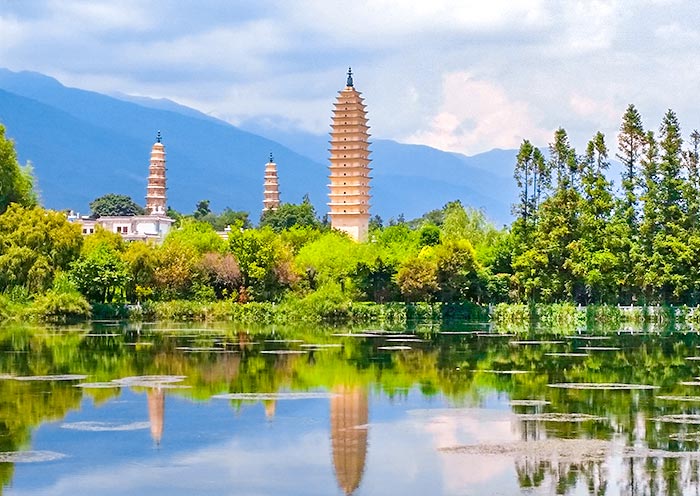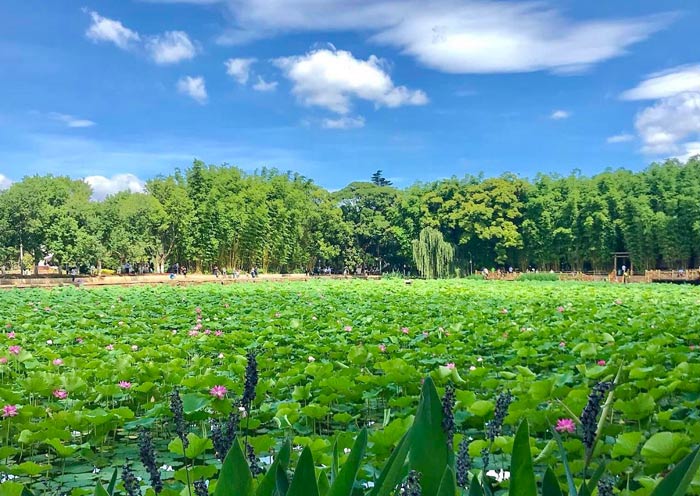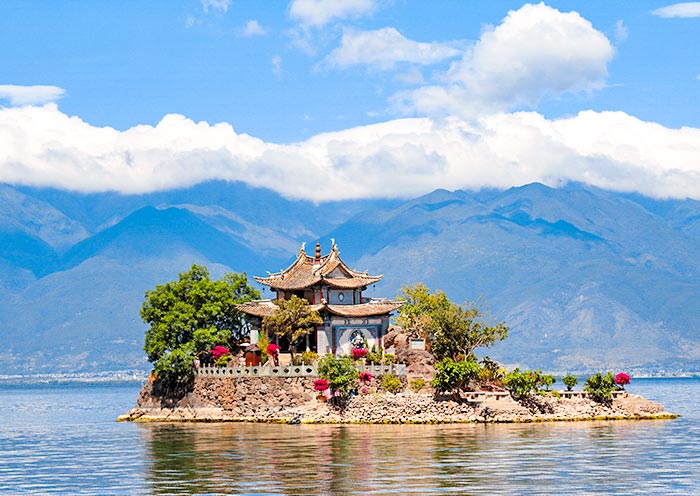Nestled in China's southwest corner, Yunnan is a colorful and wonderful destination for families and adventures! From snow-capped mountains to emerald rice terraces, captivating historic towns to vibrant ethnic minority cultures, Yunnan offers an unparalleled diversity that will leave you breathless. Before embarking on your journey, here are 50+ essential Yunnan travel tips and FAQs to ensure a memorable and smooth experience in Yunnan.
Seven highly recommended destinations in Yunnan are: (1) Kunming - The capital of Yunnan province, Kunming is known as the "City of Eternal Spring" for its pleasant climate and offers attractions like the Stone Forest and Green Lake Park. (2) Lijiang - Explore the ancient charm of Lijiang Old Town, visit the picturesque Jade Dragon Snow Mountain, and immerse yourself in the unique Naxi culture.(3) Dali - Experience the charm of Dali, with Dali Ancient City, Cangshan Mountain, and Erhai Lake offering breathtaking scenery. (4) Shangri-La - Discover the picturesque landscapes and Tibetan culture of Shangri-La, including Pudacuo National Park and Songzanlin Monastery. (5) Yuanyang Rice Terraces - Visit the terraced fields of Yuanyang, a UNESCO World Heritage Site, and witness the captivating beauty of the sunrise and sunset over the rice terraces. (6) Xishuangbanna - Immerse yourself in the tropical rainforests, encounter diverse ethnic groups like the Dai people, and experience the vibrant water-splashing festivals. (7) Jianshui - Explore the historical town of Jianshui and discover its well-preserved ancient architecture, such as the iconic Confucius Temple and the fascinating Zhu Family Garden.
To plan an unforgettable journey to Yunnan, familiarize yourself with popular attractions in each destination, transportation options between these sites, local activities and best things to do, unique cuisines, and the region's rich historical and cultural heritage. Understanding these aspects of Yunnan will ensure a delightful journey, allowing you to fully immerse yourself in the beauty and charm of this captivating province.

"Excellent Tour, best experience"
"A unique experience despite a difficult context thanks
to an experience team of organisers"
1. Can foreigners travel to Yunnan Now?+
Yes, Yunnan is open to international tourists now. In last two months, we have arranged over 20 groups to Yunnan. So If you want to travel there now, please feel free to contact us. In order to avoid inconvenience, please apply your health QR Code on Alipay or WeChat.
2. What kind of cultural activities can I participate in Yunnan?+
3. Where can I see these ethnic minority groups in Yunnan?+
4. What ethnic minorities will I meet on a Yunnan tour?+
5. What are the most famous ancient towns in Yunnan?+
6. What is the best way to explore the ancient towns in Yunnan?+
7. What are the key attractions in Yunnan's ancient towns?+
8. What is the typical duration of a Yunnan Ancient Town Tour?+
9. What is the best time to visit Yunnan for an Ancient Town Tour?+
10. What is 18 Oddities in Yunnan?+
First: Eggs sold in bundles
Second: Young Girls Called “bai Old Lady”
Third: Pies Called “Ear Piece”
Fourth: Automobiles Move in Clouds
Fifth: Key Hung on Waist-belts
Sixth: Trains Go Abroad not Inland
Seventh: Straw Hats Used as Cooker Covers
Eighth: Rainy Here but Sunny There
Ninth: Girls Wear Flowers in all Seasons
Tenth: Non-slanting Walls Built with Cobbles
Twelfth: Bamboo Used as Smoking Pipe
Thirteenth: Tea leaves Sold in Piles
Fourteenth: The Same Dress for Four Seasons
Fifteenth: Girls Hang Tobacco Bags
Sixteenth: Automobiles Move Faster than Trains
Seventeenth: Toes Show Outsides
Eighteenth: Three mosquitoes make up a Dish
11. What souvenirs could I buy in Yunnan?+
Food: Flower cake Pu'er tea Xuanwu ham Yak jerky
Featured ethnic crafts: wallets, pendants, ethnic musical instruments (such as tambourine), ethnic costumes (like shawls)
12. Are there any special festivals in Yunnan?+
The Torch Festival, The celebrations are held on June 24 or June 25 in Chinese lunar year.
Dage Festival: On February of the Chinese lunar calendar, the Yi people collect various colorful flowers and tie them into flower arches or flower trellises, which symbolizes good luck.
Water Splashing Festival:Water Splashing Festival is the grandest festival for Dai ethic minority which is mainly celebrated in Xishuangbanna Prefecture.
Miao people’s Huashan Festival:A large number of Miao people get together in the dance ground with festive costumes. Young people can express their love to each other.
1. Can I hike on the Tiger Leaping Gorge in summer?+
Yes, although summer is usually rainy season in the area of Tiger Leaping Gorge, the good tourist facilities make a hike doable in summer. Unless there would be very heavy rain, you can take a hike there in summer. It is recommended to check the weather a couple of days in advance.
2. Where is Lijiang and how do I get there?+
3. What is the best time to visit Lijiang?+
4. What are some must-see sights included in Lijiang tours?+
5. How long should I spend in Lijiang?+
6. What kind of clothes should I pack for my Lijiang tour?+
7. What handicrafts and local products is Lijiang known for?+
8. Is hiking on the Tiger Leaping Gorge dangerous?+
No, although the river beside the Jinsha River beside the Tiger Leaping Gorge is rolling like thousands of running tigers, the hiking route on the gorge is very safe. Every year around 2 million tourists take a hike on the gorge, so no need to worry about it at all.
9. How to get to Kunming from Shangri-La?+
You can take a plane which takes one hour to fly to Shangri-La from Kunming. Or take a bus from the Xibu Bus Station in Kunming. The bus ride takes around 10 hours. If you want to take a train, you need to go to Lijiang for a transfer.
1. What is the weather like in Kunming?+
2. How old is the Stone Forest?+
The current Stone Forest area is around 500,000 years old. However, it took around 3 million years for the Stone Forest to go out of sea and formed its current shapes.
3. How was the Stone Forest formed?+
Around 300 million years ago the deposits of calcium carbonate and dead bodies of marine living things came together to form thick limestones, which went out of sea and went into the bottom of a lake around 50,000 thousand years ago due to the movement of the earth's crust. After another 30,000 thousand or 40,000 thousand years, these limestones went out of water again and formed the current Stone Forest gradually due to the wind erosion and storm’s wash.
4. What are the must-see attractions in Kunming?+
5. What is the food like in Kunming? What local dishes should I try in Kunming?+
6. What are some day trip options from Kunming?+
7. How do I get to Kunming? Are there any tips for getting around Kunming?+
8. What should I pack for a Kunming tour?+
1. What is the best time of year to visit Dali, Yunnan?+
Dali is a year-round destination, each season offering its unique charm. Spring (March to May) and autumn (September to November) provide mild weather, perfect for outdoor activities. Summer (June to August) is alive with lush landscapes and blooming flowers. Despite its cooler temperatures, winter (December to February) offers a peaceful experience and stunning views of snow-capped Cangshan Mountain.
2. How many days should I spend in Dali, Yunnan?+
A minimum of three days is recommended to explore Dali thoroughly. This allows you to visit the major sights including the Dali Ancient Town, Three Pagodas of Chongsheng Temple, Cangshan Mountain, and Erhai Lake, while also allocating time for some leisurely exploration or a day trip to nearby locations like Xizhou and Zhoucheng Village.
3. What is the best thing to do in Dali, Yunnan?+
Cultural Exploration: Immerse yourself in the rich history and culture of Dali by visiting the Dali Ancient Town. Don't miss the Three Pagodas, a symbol of the city's history dating back over a thousand years.
Natural Beauty: Take a hike on Cangshan Mountain to enjoy breathtaking views and natural trails, or relax with a boat ride on Erhai Lake to admire the scenic beauty surrounding Dali.
Local Interaction: Engage with the Bai people's culture in Xizhou and Zhoucheng, where you can participate in traditional activities like tea tasting and Bai embroidery.
Culinary Delights: Sample local Bai cuisine at a traditional market or local eatery. Dishes featuring fresh fish from Erhai Lake and local produce like Xizhou baba and flower cakes are a must-try.
Festivals: If you're visiting during a local festival, such as the March Street Fair or the Torch Festival, participating in these vibrant celebrations can be an unforgettable experience.
4. Are there any cultural experiences I should not miss in Dali, Yunnan?+
Yes, engaging with the local Bai culture is a must. Consider visiting the Xizhou Ancient Town to see the Bai-style traditional architecture and participate in a local tea tasting session. Attending a local market or a cultural performance can also enrich your visit. Additionally, don't miss visiting Zhoucheng, known as the “Hometown of Bai Embroidery” Here, you can observe and engage in the creation of colorful tie-dye fabrics.
5. How do I get to Dali, Yunnan?+
1. What are the Yuanyang Rice Terraces and why are they famous?+
2. When is the best time to visit the Yuanyang Rice Terraces?+
3. How long should I spend on a Yuanyang Rice Terraces tour?+
4. How do I get to the Yuanyang Rice Terraces?+
5. Are there any physical challenges on a Yuanyang Rice Terraces tour?+
6. What should I pack for a Yuanyang Rice Terraces tour?+
7. Is it possible to visit local Hani villages on a Yuanyang Rice Terraces tour? Any other activities?+
8. What are some things to see and do on a Jianshui tour?+
9. How long are typical Jianshui tours?+
10. Where is Jianshui and how do I get there?+
11. What is the best time to visit Jianshui?+
12. What traditional crafts and products is Jianshui known for?+
13. What kind of food specialties can I try in Jianshui?+
14. Are there any hiking or outdoor activities in the Jianshui area?+
15. Which terraced fields are named UNESCO World Heritage Sites?+
These terraced fields include Qingkou Hani, Laohuzui, Duoyishu, Bada, and Red River Valley. Join in our Yunnan tour packages to visit all of these terraced fields.
1. What are the key high-speed rail routes in Yunnan?+
2. How fast do the high-speed trains in Yunnan travel?+
3. What are the amenities on Yunnan high-speed trains?+
4. Can I book tickets in advance for Yunnan high-speed trains?+
5. What are the different seating classes on Yunnan high-speed trains?+
6. How reliable and punctual are the high-speed trains in Yunnan?+
7. Can I combine high-speed train travel with other transportation in Yunnan?+
8. Is it safe to travel by high-speed train in China?+
9. What are the luggage restrictions on high-speed trains?+
1. What are the best destinations in Yunnan for photography?+
2. When is the best time of year for photography in Yunnan?+
3. Do I need special photography equipment for Yunnan?+
4. How fit do I need to be for Yunnan photography tours?+
5. What kind of photography subjects can I expect in Yunnan?+
6. What are the suitable places for photography in Yunnan?+
Kunming Dianchi Lake and Bihu Park: Every winter, many birds come here to spend the winter
Jianshui Ancient City: Old buildings intact
Yuanyang Terraces: Sunset and Sunrise
Dongchuan Red Land: Unique Landform
7. What are the best hiking destinations in Yunnan?+
8. When is the best time to go on a Yunnan hiking tour?+
9. What are the fitness requirements for Yunnan hiking tours?+
10. What should I pack for a Yunnan hiking tour?+
11. How difficult are the hiking trails in Yunnan?+








Create a tour based truly on your preferences, including all aspects of your travel in the destination